Nearly 35% of uncalibrated vortex meters develop measurement errors exceeding 2% within 12 months. Proper calibration maintains accuracy for custody transfer and process control applications.
Vortex flow meter calibration involves comparing meter output against a master flow standard, adjusting the K-factor (pulses per unit volume), and verifying linearity across 5-7 flow rates. Factory calibration typically achieves ±0.5-1.0% accuracy, while field calibration using portable provers reaches ±1-2% precision.
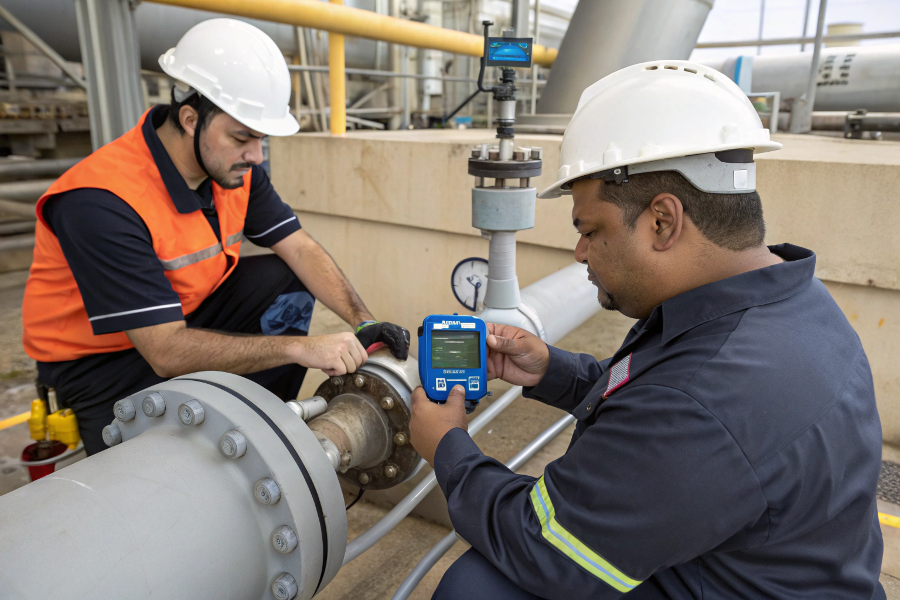
Calibration Rig Diagram
Calibration directly impacts measurement reliability and compliance. The following sections detail calibration procedures and accuracy considerations.
How to Calibrate a Vortex Meter?
Three calibration methods compared:
Calibration Approach Matrix
| Method | Accuracy | Equipment Needed | Typical Cost | Time Required |
|---|---|---|---|---|
| Wet calibration | ±0.25% | Master meter, test loop | $$$$ | 1-2 days |
| Dry calibration | ±0.75% | Signal generator, HART | $$ | 2-4 hours |
| Field verification | ±1.5% | Portable prover | $$$ | 4-8 hours |
Step-by-Step Wet Calibration:
-
Setup Preparation
- Mount meter in test rig
- Stabilize fluid temperature
- Verify pipe full condition
- Zero pressure transmitters
-
Flow Testing
- Run 5-7 flow rates (10-100% Qmax)
- Record pulses and reference volume
- Calculate K-factor at each point
- Check linearity (<0.5% deviation)
-
Final Adjustment
- Program average K-factor
- Verify zero flow cutoff
- Test at 25/50/75% points
- Seal calibration access
%(percentage)calibration process
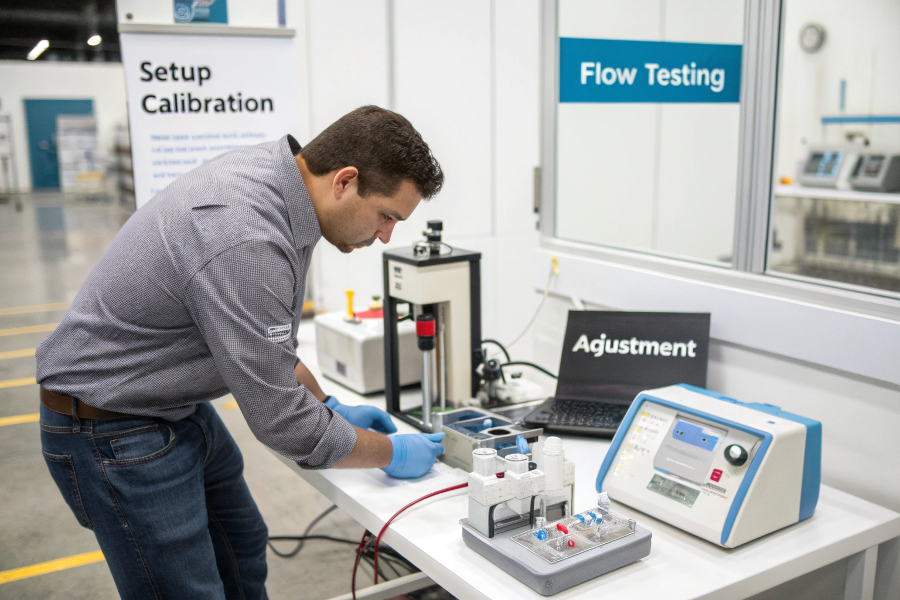
K-Factor Determination
Dry Calibration Shortcut:
-
Signal Simulation
- Apply known frequencies
- 100Hz = typical full scale
- 25/50/75Hz check points
- Verify output scaling
-
Parameter Verification
- Pipe diameter setting
- Fluid density value
- Temperature coefficients
- Damping factors
-
Diagnostic Tests
- Piezo sensitivity
- Circuit response time
- Noise rejection
Calibration Check Acceptable Range Corrective Action K-factor repeatability ±0.2% Re-test flow points Zero offset <0.1% FS Re-zero sensor Linearity error <0.5% Adjust curve fit Temperature drift <0.05%/°C Update compensation
How Do You Calibrate Flow Meters?
Flow Standard Selection Guide:
Reference Standard Options
| Standard Type | Uncertainty | Flow Range | Suitable For |
|---|---|---|---|
| Gravimetric | ±0.05% | 0.1-100 m³/h | Labs |
| Pipe prover | ±0.1% | 5-5,000 m³/h | Field/Lab |
| Master meter | ±0.2% | 0.5-10,000 m³/h | All |
| Timed volume | ±0.5% | 1-100 m³/h | Field |
Calibration Best Practices:
-
Pre-Calibration Checks
- Verify reference standard certification
- Confirm fluid properties match
- Check for air bubbles
- Stabilize system temperature
-
Test Execution
- Minimum 5 test points
- 30-second minimum per point
- 3 repetitions per flow rate
- Reverse flow check (if applicable)
-
Post-Calibration Steps
- Apply security seals
- Document all adjustments
- Print calibration certificate
- Note ambient conditions
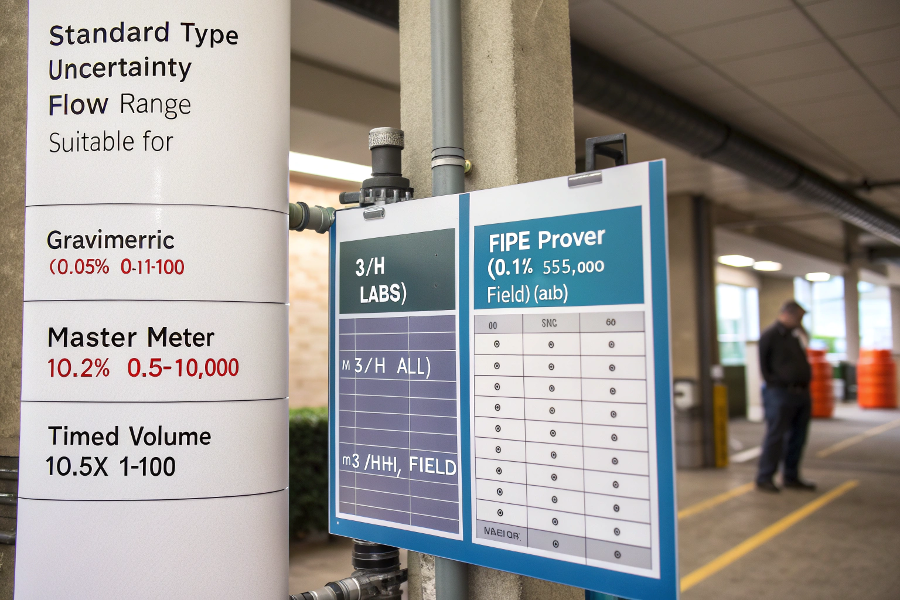
Multi-Standard Comparison
Flow Calibration Equations:
-
K-factor Calculation:
K = (Pulses counted) / (Reference volume) -
Accuracy Determination:
Error % = 100 × (Meter – Reference)/Reference -
Uncertainty Budget:
Total = √(Std² + Temp² + Press² + Time²)
| Standard Type | Vortex | Turbine | Ultrasonic | Coriolis |
|---|---|---|---|---|
| Gravimetric | ✓ | ✓ | ✓ | ✓ |
| Pipe prover | ✓ | ✓ | ✓ | ✗ |
| Master meter | ✓ | ✓ | ✓ | ✓ |
| Timed volume | Limited | Limited | ✗ | ✗ |
How Do You Troubleshoot a Vortex Flow Meter?
Calibration-Related Faults:
Troubleshooting Flowchart
-
No Output Signal
- Check power supply (24V DC)
- Test cable continuity
- Verify piezo voltage (>1mV)
- Inspect for complete blockages
-
Inconsistent Readings
- Confirm stable flow conditions
- Check for two-phase flow
- Verify proper grounding
- Test damping settings
-
Accuracy Drift
- Review calibration history
- Check for sensor buildup
- Verify fluid properties
- Inspect pipe supports
%(percentage)troubleshooting path
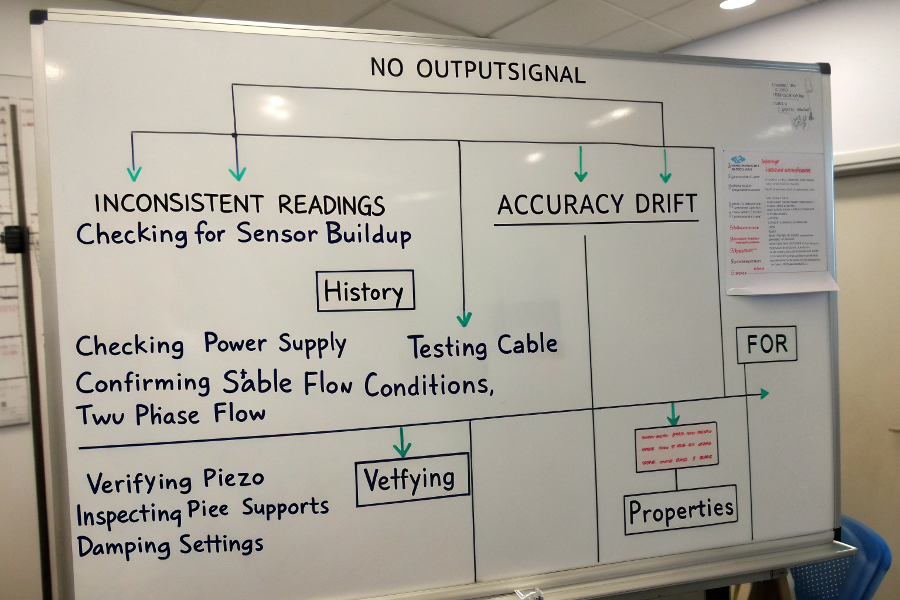
Diagnostic Decision Tree
Calibration Stability Indicators:
-
Normal Performance:
- <1% annual K-factor change
- Consistent zero offset
- Repeatable linearity
-
Warning Signs:
-
2% seasonal variation
- Shifting zero point
- Changing temperature response
Symptom Possible Cause Calibration Impact High noise Cavitation ±5-15% error Signal dropout Damaged piezo Complete failure Step changes Loose parts ±2-10% shifts Gradual drift Coating buildup 1-3%/year -
How Accurate Is the Vortex Flow Meter?
Accuracy Class Breakdown:
Vortex Meter Performance Data
| Condition | Typical Accuracy | Influencing Factors | Improvement Methods |
|---|---|---|---|
| Lab calibrated | ±0.5% of rate | Reference standard | NIST-traceable cal |
| Field installed | ±1-1.5% | Installation effects | Flow conditioners |
| Dirty service | ±2-3% | Coating buildup | Frequent cleaning |
| Low flow (<10%) | ±5% | Signal-to-noise | Higher range meter |
Accuracy vs. Other Technologies:
| Meter Type | Best Accuracy | Turndown Ratio | Cost per Accuracy % |
|---|---|---|---|
| Coriolis | ±0.1% | 100:1 | $$$$ |
| Ultrasonic | ±0.25% | 50:1 | $$$ |
| Turbine | ±0.5% | 20:1 | $$ |
| Vortex | ±1% | 10:1 | $ |
| DP meter | ±2% | 4:1 | $ |
%(percentage)accuracy comparison
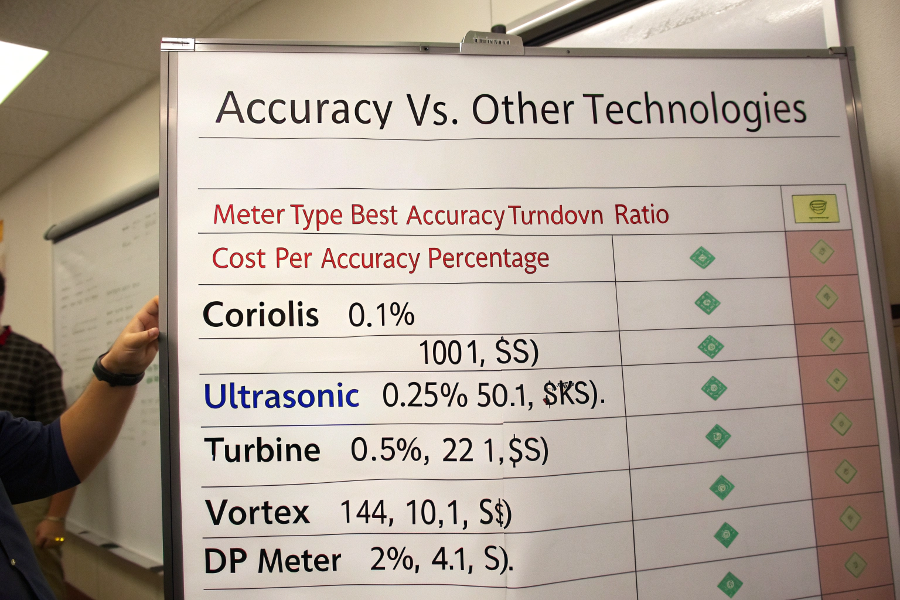
Technology Benchmark
Maintaining Accuracy:
-
Annual Verification
- Zero check
- Span verification
- K-factor stability
- Temperature test
-
Process Monitoring
- Daily comparison checks
- Monthly trend analysis
Flow Range Expected Accuracy Typical Industry Use 100-90% ±1% Custody transfer 90-30% ±1.5% Process control 30-10% ±3% Monitoring only <10% Not recommended –
Conclusion
Proper vortex flow meter calibration establishes traceable measurement accuracy between ±0.5-2% depending on method and conditions. Regular recalibration (annually for critical applications, biennially for others) combined with routine verification checks maintains optimal performance. While vortex meters can’t match Coriolis-grade precision, their 1% typical accuracy at 10:1 turndown provides reliable measurement for most industrial processes at significantly lower cost than higher-accuracy alternatives.
